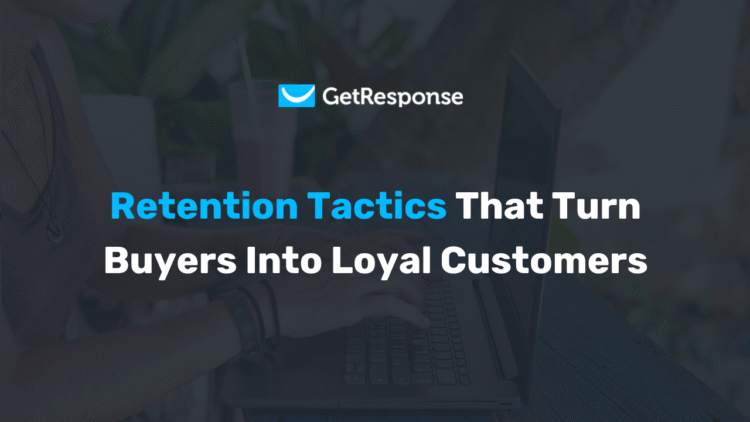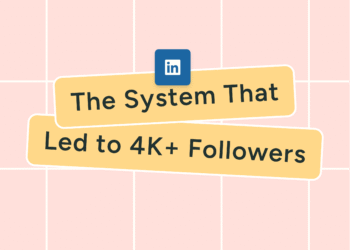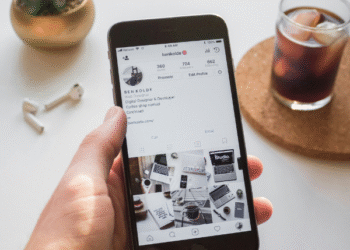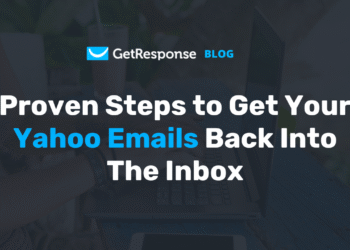The customer acquisition cost in the ecommerce industry has increased by 60% in the five years leading up to 2024. The exact CAC depends on your specific ecommerce niche. Still, research shows that most ecommerce brands spend north of $58 acquiring a single customer.
As customer acquisition gets more expensive, retaining existing customers becomes invaluable for any ecommerce brand that wants to grow without breaking the bank.
Customer retention increases the customer lifetime value, allowing you to earn more from the customers you already have. It increases your margins by reducing the amount of money you must spend on costly customer acquisition to generate revenue.
This article will look at nine proven customer acquisition strategies you can use to keep your existing customers.
Importance of ecommerce customer retention
Ecommerce customer acquisition involves implementing strategies that keep existing customers to drive repeat purchases. Retention helps you extract additional revenue and value from current customers.
Customer retention lowers the churn rate, which is the percentage of customers who stop buying from your store after a certain period.
Retention is so important in the ecommerce industry for the following reasons:
- It’s a cost-effective way of increasing profits
Customer retention is an incredibly effective way to boost profit margins.
Consider a scenario where you spend $60 to acquire each new customer and get 100 new customers in total. In contrast, you only spend around $6 on a re-engagement campaign through email marketing. Of course, not every customer will make a repeat purchase. So, let’s assume only 30 out of the 100 come back.
If each customer spends $100 in your store, then the first round of orders will generate $10,000 ($100 X 100 customers) in revenue. But your CAC will be $6,000 ($60 X 100 customers). So your profit is $4,000. That’s a 40% profit margin.
In contrast, the second round of orders will generate $3,000 ($100 X 30 customers), costing you just $180 ($6 X 30 customers). The profit from this campaign is $2,820, a whopping 94% profit margin.
By simply focusing on customer retention, you can increase your profit margin significantly at a fraction of the cost of acquiring new customers.
- It lowers customer acquisition costs
Customer retention lowers customer acquisition costs through referral and word-of-mouth marketing. A great retention strategy turns loyal customers into brand advocates. These customers understand your products and brand inside out.
That means they can recommend your products to their friends. And, there’s nothing more powerful in marketing than recommendations from friends and peers. Research shows that 88% of customers trust product recommendations from friends, more than any other channel.
That means a simple recommendation can attract new customers at a much lower cost than what you’d typically spend on paid advertising, for example. This reduces your overall customer acquisition cost.
Ecommerce customer retention also reduces acquisition costs by spreading the initial CAC across multiple orders. Let’s use the same example from above where you spent $60 to acquire each new customer. If a customer makes a single $100 purchase from your store, then your CAC remains at $60 (so 60% of the sale goes to CAC).
On the other hand, if you invest in effective customer retention strategies and the customer ends up making a total of ten $100 purchases, your CAC drops to $6, i.e., $60 divided by 10 orders. That means your CAC drops from 60% to just 6%.
Even if you assume that you spent $10 on customer retention strategies, your CAC is still at just $7 or 7% for every order placed, i.e., $60 (for acquisition) + $10 (for retention) = $70, divided by the 10 orders, which equals $7.
- Boosts the average order value
Effective customer retention campaigns help customers understand your brand and products better. They educate customers about all of your brand’s offerings. They also help with building customer trust.
As a result of these campaigns, customers spend more in your store. They become more responsive to cross-selling and upselling campaigns, for example. They’ll add more products to the cart and upgrade to premium product options. This boosts the average order value and drives more revenue for your online store.
- Increases customer lifetime value
Customer retention campaigns enhance the relationship between your brand and its customers. It encourages repeat purchases through ongoing education, trust-building initiatives, and targeted offers.
This helps you extract maximum value from each customer. It compounds your marketing ROI and can give you a competitive edge against your competitors.
- Boosts customer satisfaction and loyalty
Customer retention techniques revolve around relationship building. These tactics focus on educating customers on how to maximize the value of each purchase. This is done through personalized usage tips and product guides shared within post-purchase emails, for example.
Retention campaigns also provide value to customers through exclusive offers and discounts. Think about Anniversary and Birthday email campaigns, for example. Even campaigns like early access to new products help customers feel appreciated and valued.
All these initiatives build an emotional connection between your brand and its customers. This promotes customer loyalty and satisfaction.
Transform customer relationships into lasting revenue GetResponse
Stop losing customers to competitors. Build automated retention campaigns that turn one-time buyers into loyal advocates who keep coming back for more.
How to measure customer retention in ecommerce
The ecommerce customer retention rate is the percentage of customers who return to make a repeat purchase after their initial order in your store. This rate is calculated using the following formula.
Customer retention rate = ((total new customers at the end of the period – number of new customers acquired during the period) / number of customers at the start of the period) X 100.
You can use this formula to calculate the customer retention rate during Q1, for example. The period will be three months from January to March.
Let’s assume you’re calculating the retention rate of an online store that started with 800 customers in January. The store acquired 60 new customers between January and March. By the end of March, they had a total of 710 customers.
Customer retention rate = ((710-60)/800) x 100
= 81.25%.
Don’t worry about the calculations, though. Ecommerce platforms like Shopify and BigCommerce have built-in reporting tools and third-party apps that can track customer retention automatically. Use these tools to track your retention rate and compare it against the average customer retention rate in your industry.
Also, while the average customer retention rate is 75%, this rate can vary a lot depending on the industry you’re in. Therefore, a good customer retention rate will depend on your industry.
9 ways to improve ecommerce customer retention
Here are nine proven strategies on how to retain ecommerce customers.
1. Personalize the customer experience
60% of consumers are likely to become repeat buyers when they receive personalized shopping experiences. Another study shows that shoppers who receive personalized customer experiences are likely to spend 40% more than buyers who get a generic shopping experience.
71% of customers also expect personalized interactions from the brands they buy from.
Personalization is one of the best ways to improve the customer experience and turn your first-time buyers into repeat customers.
But what exactly does a personalized experience look like?
Effective personalization involves collecting customer data to understand their needs and preferences. It also involves using ecommerce marketing automation platforms like GetResponse to track customer behavior on your site. The GetResponse automation platform can track the pages customers visit, the items they buy, the carts they abandon, and even the email links they click.
This data reveals which products your customers prefer, as well as their needs and pain points. You can then use those insights to tailor your interaction with each customer. For example, you can recommend the right products based on the items they’ve been browsing on your site. You can also send tailored upsell and cross-sell recommendations that are likely to meet your customer’s needs.

But personalization extends beyond product recommendations and sales. Effective personalization also involves tracking special dates and being there for your customers. For example, you can track their birthdates and anniversaries and use email marketing to send warm congratulatory messages.
You must invest in a reliable CRM or customer data platform powered by accurate customer data. Use this data to personalize each interaction and deliver a consistent customer experience across all your communication and marketing channels.
2. Nurture customer relationships with strategic email marketing
Customers can return to your store in several ways. First, you can hope the first experience was good enough to make them want to buy from you again. This approach can work, but “hope” is not really a strategy.
The second option is to pay your way into getting repeat customers. Basically, you can invest in paid advertising to run remarketing campaigns that will bring the buyers back to your store. This can be a great strategy, but it keeps your CAC high.
Then there’s the third strategy, where you invest in intentional relationship building. Where you stay in touch with your customers through post-purchase email campaigns to help them get maximum value from their purchase, while showing them what makes your brand unique.
That is a far more cost-effective strategy for retaining existing customers.
A regular newsletter, for example, helps you stay top-of-mind. You can use this newsletter to share product tips, product previews, how-to guides, styling guides, and other types of helpful content. This builds stronger relationships with your customers because it demonstrates that you don’t just show up when you want their money; you’re also interested in their success and satisfaction.
For example, Huel shares some really helpful articles and recipes through its regular newsletter, as shown below.

Notice how the email focuses on purely educational content. It’s not trying to sell the recipient anything.
Besides nurturing customer relationships, email marketing can also drive more sales through strategic campaigns. Ecommerce email marketing campaigns, such as replenishment reminders, win-back campaigns, flash sale campaigns, abandoned cart recovery, and birthday/anniversary emails, can significantly increase sales.
And the best part is that you can automate all these campaigns using an email marketing automation platform like GetResponse. GetResponse provides prebuilt automation workflows for all the popular ecommerce email campaigns. This includes workflows for cart abandonment recovery, welcome emails, win-back campaigns, and birthday emails.

You can also build a custom workflow from scratch using the visual automation builder. Select the relevant trigger and condition as well as the email message you want to send. The workflow will ensure your message is deployed every time the trigger and conditions are met.
Automation makes sure that these emails are delivered at the perfect time for optimal conversions.
Learn more about ecommerce email marketing automation in this comprehensive guide.
3. Use predictive analytics to identify at-risk customers
Predictive analytics uses data to identify customers who are at risk of churning. This strategy uses machine learning models to provide customer “health scores” to help you intervene and save customers before they churn.
Predictive analytics uses data like time since last order, purchase frequency, email engagement rate, average order value trend (i.e., is AOV going up or down?), and browsing behavior to determine a customer’s likelihood to churn.
These customers can also be placed into several segments based on how at risk they are. You could have high-risk, medium-risk, and low-risk segments. This segmentation allows you to allocate your resources correctly for maximum impact.
For example, you can use bigger discounts and leverage several channels, including SMS marketing and paid campaigns, when you’re dealing with customers in the high-risk segment.
Another way to approach segmentation is based on the customer spend or value. You may want to identify your VIPs who are at risk of churning and prioritize your resources on re-engaging them. This makes sure that the VIPs who contribute the most to your revenue receive dedicated incentives and attention to keep them loyal to your brand.
This is another campaign you can automate with marketing automation solutions. Some marketing automation platforms already have a way of tracking customer engagement. You can set up a workflow to send an automated win-back or re-engagement campaign when a customer doesn’t interact with your brand within a specific duration, like 90 days.
Tools like Zendesk and Gainsight also provide dedicated customer success platforms that can predict customer churn.
4. Create customer loyalty programs to encourage repeat purchases
Effective customer loyalty programs increase the repeat purchase rate by demonstrating to customers that they can unlock additional value by continuing to shop at your store. Think about a tiered customer loyalty program as an example. In these programs, customer loyalty is grouped into several tiers based on customer spend. The higher the tier, the more the value and perks customers unlock.
Tiered customer loyalty programs create a gamified experience that encourages customers to shop and spend more to unlock more perks. These programs create a win-win situation. Your store attracts repeat purchases while the customers unlock bigger discounts, early access to new products, and other perks.
It’s also important to build a loyalty program that looks at more than just the customer’s spending. Customers’ engagement with your brand should also earn them loyalty points. For example, you can ask customers to share a testimonial or review after making a purchase to earn points. Referring friends and sharing your content on social media should also earn them points.
These non-monetary actions demonstrate to your customers that you value more than just the money. This builds lasting relationships and long-term customer loyalty. Plus, engagement actions like product reviews and testimonials give you user-generated content that you can use for your marketing campaigns.
Make sure the incentives and rewards are also personalized to align with customer expectations and preferences.
5. Provide fast and helpful customer support
How easily can customers get in touch with a live customer support agent when they need assistance? What options do customers have for reaching your customer service team? Are your customer support agents knowledgeable enough to resolve customer complaints during the first call?
Exceptional customer service is a powerful retention lever that can enhance the customer experience and make your customers feel valued. Provide several customer support channels to make it convenient for customers to reach you. Live chat, social media, and email are popular options.
But providing several channels presents a risk of having fragmented customer queries. This can make it harder for your customer support representatives to keep up with each query. And if they don’t have access to all the information, then the services they provide to your customers are bound to be poor.
You’ll need a unified customer support system to ensure your reps can access all the customer queries from one place, regardless of the channels they used.
Quick response is also vital. Respond to customer support tickets and emails within one hour. Phone and live chat inquiries should be responded to within 30 seconds.
You also want to train your customer support representatives to ensure they have a thorough understanding of your products. This will reduce the resolution time, allowing your customers to get all the answers they need in the first call, rather than being passed on to multiple representatives.
It’s also essential to give your customers an option to resolve their own queries. 91% of customers would use a knowledge hub over contacting the support team if it resolved their issue, according to Zendesk. So build a knowledge hub that provides answers to common queries. Include details about your return policy and exchanges on the product pages, for example.
You can also create product guides to address some of the most commonly asked questions.
6. Offer subscription services that save customers time and effort
Another clever way to retain customers is through a subscription business model. Subscriptions allow customers to receive the products they use at specific intervals without having to place an order each time. This model brings convenience to your customers while giving you predictable and recurring revenue.
Convenience is not the only perk to the customers, either. Since customers are locked in, you can offer the same products at a significantly lower price. That means your customers save money by simply choosing to auto-ship the products they use all the time.
Meanwhile, you’ll keep the customers engaged and earn predictable revenue to support your growth plans.
That’s what the pet supplies brand Petco does. Customers who opt for the repeat delivery subscription service get 35% off their first repeat order and 5% off on all future orders.

Start by identifying products that require regular replenishment. Coffee beans, supplements, skincare products, and pet foods are all examples of products that can work with a subscription business model.
Next, analyze your purchase data to determine the purchase frequency. This should give you an idea of how long customers stay between orders. You’ll need that data to come up with appropriate shipping schedules.
Finally, tailor each recommendation to the customer’s purchasing behavior. So, look at the products they normally buy and use them to create a tailored subscription box. You can also offer your customers the option to choose between different delivery schedules, such as biweekly, monthly, or bimonthly.
Build Predictable Revenue With Automated Customer
Turn one-time buyers into loyal subscribers with intelligent automation that delivers the right message at the perfect moment. Start building lasting customer relationships today.
7. Use a referral program to build brand advocacy
As we mentioned earlier, customers value recommendations from friends and other customers more than brand marketing. Customers coming through referrals are also easier to convert and are more likely to stick with your brand for a long time. Not to mention that they’re cheaper to acquire.
Therefore, an effective referral program is one of the most effective ways to improve customer retention while lowering your CAC. The best referral programs are simple. They also make sure everyone wins. The existing customer gets a reward, the referred friend also gets a special welcome discount, and your brand gains a new customer.
To encourage engagement with your referral program over extended periods, offer tiered rewards to your customers based on the number of referrals they make. Your existing customers can receive 10% off for the first 5 customers they refer. Then give them 15% off or free shipping on top of the 10% off for the next 5 customers.
You also want to make it easy for customers to tell their friends about your brand. A one-click sharing option will encourage more customers to share your brand offerings with their friends. Promote the program through post-purchase emails and SMS campaigns. You can include it in your order-confirmation emails, for example.
The coffee brand Cometeer does this in their order confirmation email, as shown below.

The order confirmation page is another place where you can inform customers about your referral program.
Creating a brand community is a great way to make customers build a strong emotional connection with your brand. A community gives customers a sense of belonging by connecting them with other people who share the same interests and values.
The best communities focus on sharing value and not promoting products. So, make your community value-driven by encouraging helpful conversations. Empower community members to drive the conversations and help one another. You can do that by rewarding the most active members with exclusive discounts, badges, invitations to new product launches, and public recognition.
Third-party platforms like Facebook Groups, Slack, and Discord provide an easy way to build a community. You can also build your online community from scratch using platforms like GetResponse and Mighty Networks.
GetResponse offers an intuitive website builder that allows you to create your online community website from scratch. The platform even features website templates specifically designed for online communities. The beauty of choosing this option over third-party platforms like Facebook is that you can control the community branding to align with your overall business branding.

That said, start by determining whether your customer base will be more receptive to a self-hosted community or if you’re better off building the community on the platforms they already use, e.g., Facebook Groups and Reddit.
There’s also no harm in building multiple communities if you have the resources to manage them. Huel, for example, has a Hueligan Facebook group, a Reddit community, and a forum attached to their website.
9. Collect and act on customer feedback
Give your customers a voice if you want them to stick with your brand over the long haul.
Collect customer feedback on a regular basis and act on that feedback. This shows your customers that you care about their opinions. They’ll also feel like partners in your brand’s journey of continuous improvement. The sense of ownership will turn one-time buyers into repeat customers and brand advocates.
Use email to collect feedback on the products you sell and the overall buying experience. Collect this feedback at several strategic touchpoints in the customer journey.
One of those touchpoints is after the customer has placed an order. Wait a few days then send a feedback request email. Use this email to ask customers how seamless their buying experience was and what they think about the products they purchased.
The other feedback you should collect is after customer support inquiries. This feedback is useful in highlighting friction points within your customer service department, a department that is very crucial for long-term retention.
Finally, collect regular feedback from all customers. Send feedback request emails every 6 months, for example. These give you an overall pulse check on what customers think of your brand.
Customer feedback isn’t just data – it’s your roadmap to retention.
How to retain ecommerce customers with GetResponse
Customer retention is the fuel for ecommerce growth. You can spend endless resources acquiring customers, but if you’re losing more customers than you retain, you’ll be stuck chasing your tail.
GetResponse supports ecommerce customer retention through our marketing automation platform. This automation solution connects to your ecommerce platform directly. It then tracks customer behavior and uses preset triggers to connect with your customers through personalized communications.
The automation platform can send personalized product recommendations based on the items customers browse, for example. It can also track customers who don’t open your emails or engage with your brand and send them automated win-back emails.
Check out how ecommerce brands like Wurth MODYF have used these tools to boost customer loyalty and increase turnover by 72%.
















